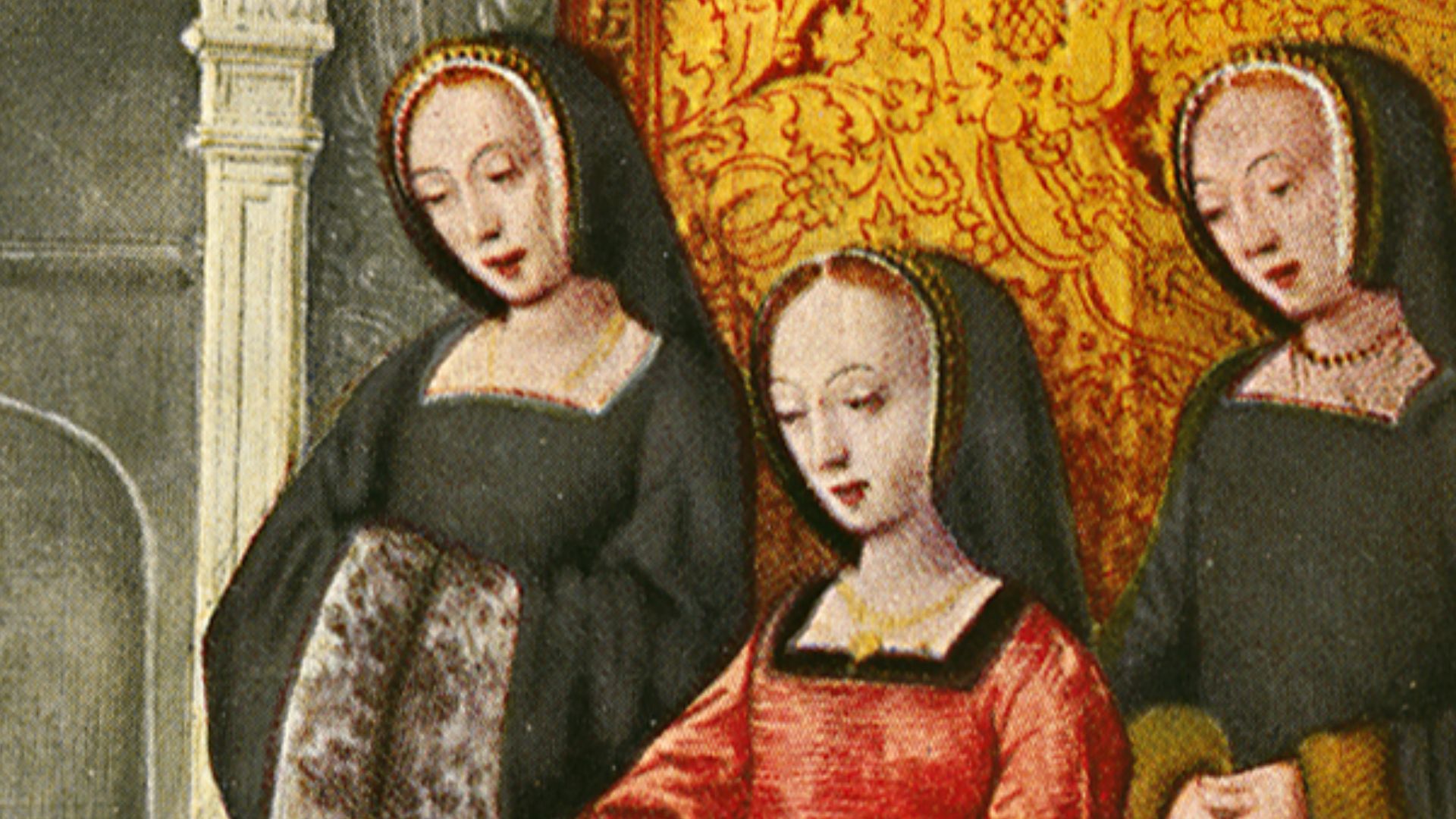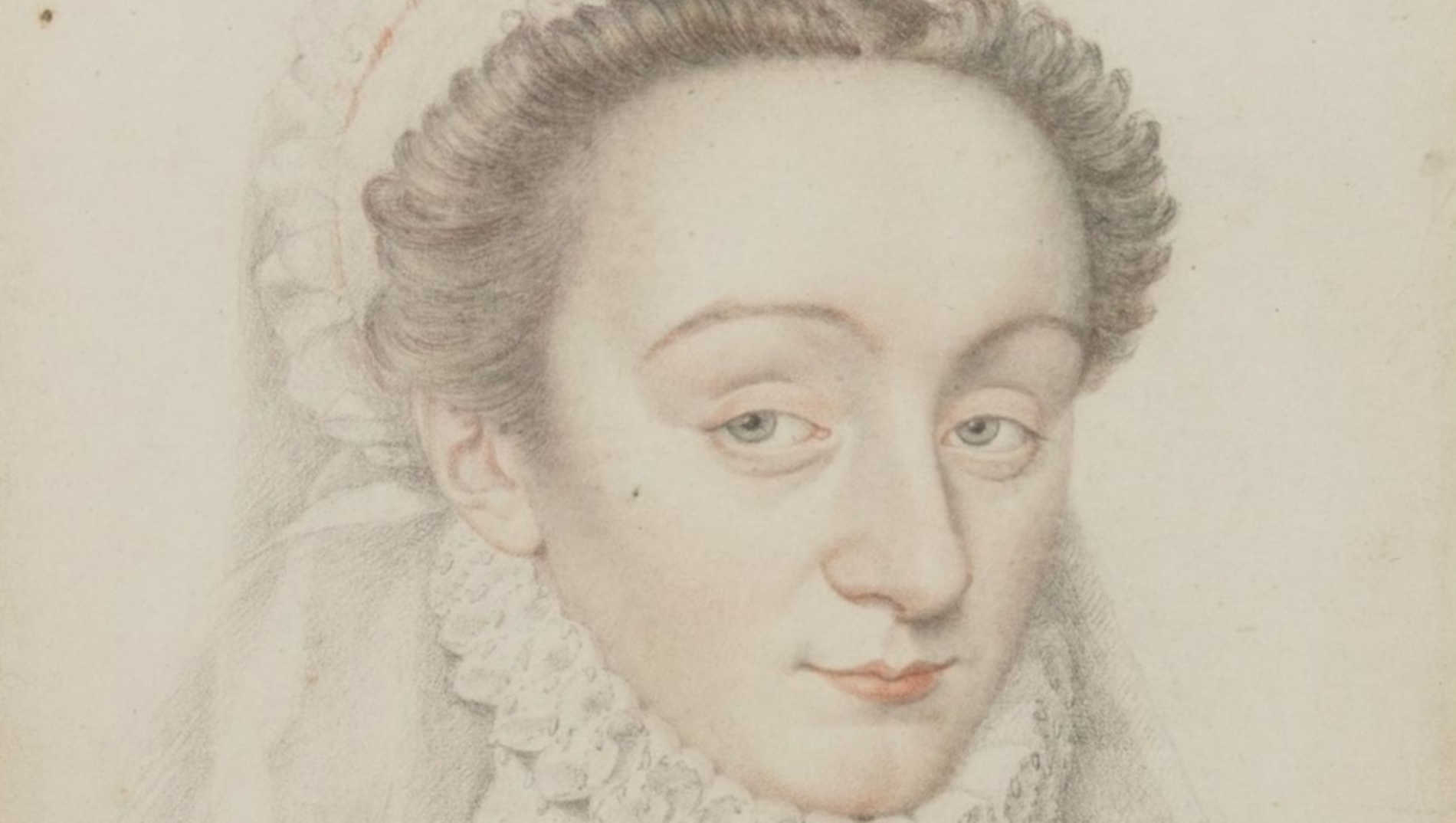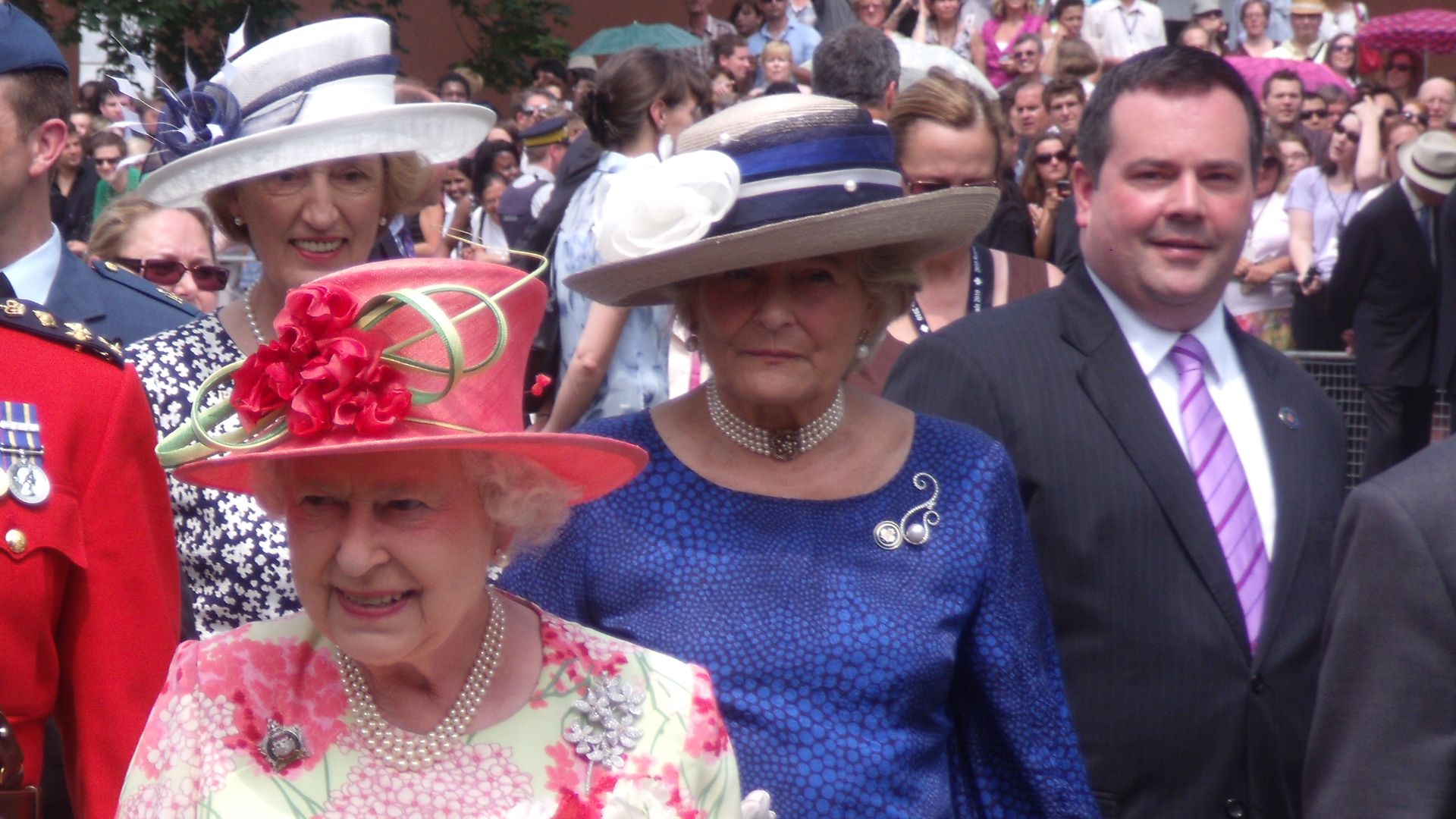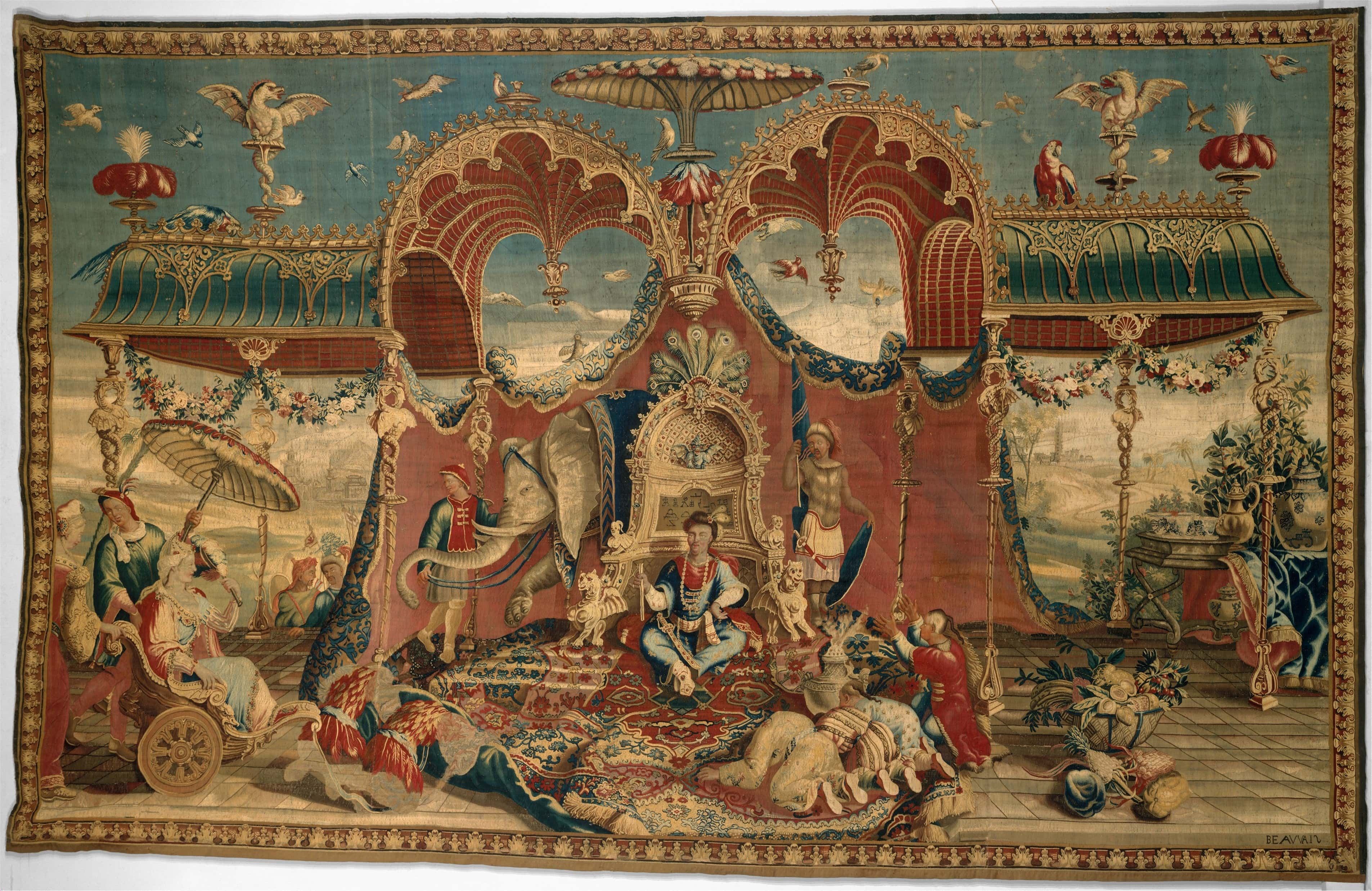Ladies-in-waiting weren’t just “professional friends” to the rich. These women were also trusted as discrete messengers, state spies, household accountants, personal stylists, and just generally entertaining people to have at parties. In rare occasions, a lady-in-waiting’s intimate knowledge of intrigue could grow so great, she could threaten to eclipse the queen herself. No wonder the court used ranks among ladies to keep everyone in order. Fix that curtsey to these 43 facts about ladies-in-waiting.
Ladies-in-Waiting Facts
43. It’s Me or the Girls
A British prime minister once turned down his job because Queen Victoria refused to fire her ladies-in-waiting. Confused? In 1839, the Whig prime minister Lord Melbourne intended to resign. A young Queen Victoria reluctantly invited Conservative leader Robert Peel to form the new government. But since his party would be a weak minority government, Peel demanded that Victoria fire several of her most beloved ladies-in-waiting, who just happened to be married or related to chief Whig politicians.
Victoria was originally distraught and refused to cave to his demands, forcing Peel to decline the position. But when Peel was elected Prime Minister of a majority government in 1841, the Queen toed the party line and replaced some of her Whig ladies with Conservative gals. The staffing scandal would be fittingly known as “The Bedchamber Crisis.”
 Franz Xaver Winterhalter, Wikimedia Commons
Franz Xaver Winterhalter, Wikimedia Commons
42. Who Needs a Paycheck When We Have Wax?
In the household of Marie Antoinette, her ladies were more than welcome to wear discarded clothes of their most generous mistress. They were also “allowed” to take home unused candles—a benevolence that actually netted a healthy profit for the lucky maids.
 Jean-Baptiste André Gautier-Dagoty, Wikimedia Commons
Jean-Baptiste André Gautier-Dagoty, Wikimedia Commons
41. That’s Nothing, Mom
At least in England, the number of ladies-in-waiting on staff could vary greatly from Queen to Queen. For example: the mid-15th-century queen, Elizabeth Woodville, had just five ladies-in waiting. Her daughter, Elizabeth of York, would have as many as 36.
 Kaho Mitsuki, Wikimedia Commons
Kaho Mitsuki, Wikimedia Commons
40. One Big Serving Family
The Tudor period marked the beginning of more formal ranks among ladies-in-waiting. In order, the “greatest” ranks were: the Mistress of the Robes, The First Lady of the Bedchamber, the Ladies of the Bedchamber, the Women of the Bedchamber, and then finally the Maids of Honor. For the record, most ladies worked on seasonal rotation. It’s not like they were all working in one big bedchamber at the same time or something. I mean, that would have to be one big bedchamber, even for a Queen…
 Franz Xaver Winterhalter, Wikimedia Commons
Franz Xaver Winterhalter, Wikimedia Commons
39. Honor Never Dies (Unless You Do)
Although “Maid of Honor” is the lowest rank among a queen’s ladies, these girls are legally entitled to style themselves as “The Honorable” for the rest of their lives.
38. Still Waiting
The “glory days” of being a Queen’s Maid of Honor are over. These days, Maids of Honor are almost exclusively used to attend to queens at their coronation. And in case you haven’t checked, we haven’t had one of those in a while…
37. Trapped in the Closet
As the highest ranked lady-in-waiting in the English monarchy, the Mistress of the Robes used to be in charge of her mistress’s clothing and jewels. Today, the job is much more administrative and about managing the rotation of other ladies for the queen.
 Godfrey Kneller, Wikimedia Commons
Godfrey Kneller, Wikimedia Commons
36. I’m Sick of This Boys’ Club
In 1286, the French royal court only had five ladies-in-waiting. However, this changed under the queenship of Anne of Brittany, who encouraged all men at court to also send daughters to her service. By the 16th century, the number grew tenfold to 54 ladies.
 Attributed to Jean Pichore, Wikimedia Commons
Attributed to Jean Pichore, Wikimedia Commons
35. Waiting in the Wings
Three wives of Henry VIII were ladies-in-waiting to the queens whom they would, eventually, replace. In order, these rising stars were Anne Boleyn, Jane Seymour, and Catherine Howard.

History's most fascinating stories and darkest secrets, delivered to your inbox daily.
34. Ladies’ Man
In theory, ladies “served” other ladies. But Francis I, the philandering Valois King of France, surrounded himself with his own informal “staff” of beautiful and accomplished serving women known as “la petite bande des dames de la Cours.” Just a few of these women became his mistresses, such as Anne de Pisselieu. Reportedly, one of la petite bande, Diane de Poitiers, tried to attract the king’s attention, but he wasn’t interested in her that way. (She eventually settled on being mistress to Francis’s son, Henri).
33. May I Offer You an Egg in This Trying Time?
In the court of Henry VIII, there was one lady who seemed almost desperate to have one her daughters attend the queen—no matter who the queen was. Lady Lisle herself was an attendant to Anne Boleyn, but when Jane Seymour replaced Anne in 1536, Lisle spared little time in petitioning every friend she could to get her own daughters a spot in the new order. Playing to Queen Jane’s highly-specific pregnancy cravings, Lisle sent Jane a quail as a polite bribe, and it worked. Jane took on the more “favorable” of her daughters, Anne Basset (who might have become mistress to Henry VIII himself…).
 Hans Holbein the Younger, Wikimedia Commons
Hans Holbein the Younger, Wikimedia Commons
32. Five out of Six Ain’t Bad
Jane Parker served as a lady-in-waiting to all but the last of Henry VIII’s wives. Why didn’t she serve the sixth? Parker was executed in 1542 for allegedly abetting treason with the fifth wife, Catherine Howard.
 Hans Holbein the Younger, Wikimedia Commons
Hans Holbein the Younger, Wikimedia Commons
31. Catch These Hands
In her youth, Queen Elizabeth I of England was a pretty undemanding mistress who was known to give her ladies-in-waiting as much time off as they needed. In her later years, however, Elizabeth was rumored to be much more irritable toward her younger maids. It was even whispered that the occasional object was flung from the royal hand in their direction.
 Henry Gillard Glindoni, Wikimedia Commons
Henry Gillard Glindoni, Wikimedia Commons
30. Bunk Buddies
Female monarchs rarely slept alone. Cleanse that dirty mind and read on: the Queen rarely went to bed without a maid to sleep in her bedchamber and attend on her as needed. In fact, to be part of this sleepover was an honorable position, and usually given to the current “favorite.”
29. For a Lady’s Eyes Only
Queen Elizabeth’s ladies-in-waiting were one of the few people allowed to see her eat on a regular basis. For a such a grand dame, Gloriana did not like to eat in public. Instead, Elizabeth had food directly sent to her private chamber, where her ladies had the honorable extra job of carving up the meat for their mistress by themselves.
 Unknown, perhaps Federico Zuccaro (see Sir Roy Strong, The English Icon, 1969), Wikimedia Commons
Unknown, perhaps Federico Zuccaro (see Sir Roy Strong, The English Icon, 1969), Wikimedia Commons
28. Everyone Starts Somewhere
The idea that your maids (and other servants) were forever your social inferiors was not always the case. In the 15th to 17th century, pretty much every upper-class person also “served” in some capacity as part of their education. In theory, someone who never served didn't know how to command. Even kings weren't exempt; Margaret of Denmark, the Queen of Scotland, insisted that her own son, the future James IV, wait upon her to learn “both sides” of the “master-servant” dynamic that would rule their lives.
 Unknown authorUnknown author, Wikimedia Commons
Unknown authorUnknown author, Wikimedia Commons
27. The Mary Maids
Since she was a child, Mary, Queen of Scots had four close ladies-in-waiting. Her mother, Marie of Guise, selected her near-lifelong gal pals from among the highest-born families of Scotland. They were all also named “Mary.” Presenting: Mary Seton, Mary Beaton, Mary Fleming, and Mary Livingston. In addition to sharing a name with their mistress, you should also know “Marie” was also the Scots word for “maid,” which brings this elaborate pun into full circle. Well done, Marie of Guise.
 Unidentified painter, Wikimedia Commons
Unidentified painter, Wikimedia Commons
26. Working Mom
Eleanor Paston, Countess of Rutland, gave birth to at least eleven kids between 1523 and 1539. Oh, and she still managed to serve as a lady-in-waiting to four of Henry VIII’s wives in the entire time (or at least when she wasn’t totally incapacitated).
 Hans Holbein the Younger, Wikimedia Commons
Hans Holbein the Younger, Wikimedia Commons
25. Doing It for Love
For centuries, ladies-in-waiting had no formal pay structure. Some went without wages, others were given a salary; some were given quarterly payments while others lived on casual cash rewards. With this kind of “stability,” it becomes pretty clear these women were not doing it for the money—this job has other perks.
 Antoine-François Callet, Wikimedia Commons
Antoine-François Callet, Wikimedia Commons
24. Maids of the Day Planner
The modern ladies-in-waiting to Queen Elizabeth II serve as “personal assistants” and professional bouquet carriers. They are in charge of managing her schedule and attending to her at events. Not exactly exciting stuff, but on the plus side: four weeks’ vacation!
23. I Walk a Lonely Road, the Only Road That Queens Have Never Known
Kate Middleton, the Duchess of Cambridge, broke centuries of royal tradition by going on tour with no ladies-in-waiting. In fact, she doesn’t have any official ladies-in-waiting appointed to her at a given moment.
 Max Mumby/Indigo, Getty Images
Max Mumby/Indigo, Getty Images
22. The Maid’s Malady
In a Victorian royal scandal, a lady-in-waiting to Queen Victoria’s mother was suspected to be pregnant by the queen’s mother’s “favorite” (and own suspected lover) John Conroy. The maid in question was Flora Hastings, who began to experience a swelling in her lower abdomen. Hastings consented to a physical exam, where the doctors confirmed that she was not pregnant. Worse: the swelling was actually an advanced cancerous tumor that would kill her just months later.
 Unidentified painter, Wikimedia Commons
Unidentified painter, Wikimedia Commons
21. I Solemnly Swear I Am up to Just Good
In early modern France, the “Surintendante” and the Governess were special ladies-in-waiting. As the only female officeholders, they were required to swear an oath of loyalty to the King of France himself.
 Unidentified painter, Wikimedia Commons
Unidentified painter, Wikimedia Commons
20. Many People Have Multiple Jobs
In the royal Japanese courts, being a lady-in-waiting wasn’t just a matter of household management—it was also a matter of state, as these women would also often serve as imperial secretaries.
 Yashima Gakutei (1786 – 1868), Wikimedia Commons
Yashima Gakutei (1786 – 1868), Wikimedia Commons
19. The Mistress of Regifting
Susan Clarencieux was the Mistress of the Robes and closest friend of Queen “Bloody” Mary I of England. According to a report by the Venetian ambassador Giovanni Michieli, Clarencieux also had a reputation for being greedy and underhanded. Apparently, the lady-in-waiting had convinced Michieli to give Queen Mary his own coach and horses as a gift. Queen Mary subsequently passed this gift over…to Susan Clarencieux. I think Michieli was just too afraid to be openly miffed at the queen’s regifting.
 Antonis Mor, Wikimedia Commons
Antonis Mor, Wikimedia Commons
18. Any Maid Could Be the Future
In ancient and early-modern China, every attendant in the Emperor’s harem was a potential “queen.” During the Song dynasty, palace women were organized into three groups: blood relatives of the emperor, official consorts and concubines, and all their attendants. At any point, any woman serving in last rank could be favored and promoted to a royal consort. So you’d better play nice.
17. Hook-ups Require a Permit
Lettice Knollys was the granddaughter of King Henry VIII’s mistress, Mary Boleyn, and she was Queen Elizabeth I’s relation and also her lady-in-waiting. This put Knollys in a place of favor, where should would have stayed…if Elizabeth’s favorite Robert Dudley hadn’t married Knollys without his royal sweetheart’s permission. Elizabeth was furious and had them both banned from court.
16. No Rest for the Grieving
One of Queen Elizabeth I's ladies, Margaret Radcliffe, had the “honor” of being one of the few noble Elizabethan autopsies on record. Radcliffe was so distraught at the death of her twin brother, she fell into a catatonic state and refused to eat. Elizabeth ordered Radcliffe, nonetheless, back to duty, perhaps thinking work would set her free. But Radcliffe continued to deteriorate and eventually died. The Queen then ordered an autopsy, which was incredibly rare for this time. But according to sources, there was nothing ostensibly wrong with Radcliffe, save for “certain strings striped all over her heart.”
15. The Maid Who Made the Queen
Queen Elizabeth’s Chief Lady of the Bedchamber was also her surrogate mother. Katherine “Kat” Ashley served as Elizabeth’s governess since Anne Boleyn’s execution in 1536. As a learned woman herself, she is often credited with providing Elizabeth’s early education in languages, math, geography, history, and even astronomy. Upon her ascension, Ashley was elevated to the head of Elizabeth’s private household. Would there be a “Gloriana” without a nanny who was eager to teach her?
14. Keep Your (Maybe) Sis Close
One of Elizabeth I of England’s chief ladies was her cousin, Catherine Carey. But was she also her sister? Catherine was the daughter of Mary Boleyn; while it was not confirmed, there were rumors that she was the secret child between her mother and Elizabeth’s own father, Henry VIII.
 Steven van der Meulen, Wikimedia Commons
Steven van der Meulen, Wikimedia Commons
13. Royal Scrub
To this day, the Woman of the Bedchamber still has the pristine task of helping the Queen take a bath.
 The White House from Washington, DC, Wikimedia Commons
The White House from Washington, DC, Wikimedia Commons
12. Copy, Paste, & Reply
If you’ve sent fan mail to the Queen (don’t laugh), it was probably a lady-in-waiting who read it. Every morning, the queen will answer a choice selection of fan mail herself, but then pass off the rest of the pile to her helpful handmaids.
11. For the Love of Service
In modern times, ladies in waiting are not paid. Sometimes the Crown will grant them room and board, including a travel and clothing allowance. But let's be real, they wouldn’t be doing this job if they weren’t already rich.
10. From the Sewing Circle to the Tomb
These days, ladies-in-waiting serve for life. So dash any hopes of a robust pension plan.
 Universal History Archive, Getty Images
Universal History Archive, Getty Images
9. Ladies’ Choice (Kinda)
Historically, European queens did not have that much choice in the appointment of their own ladies. In theory, they had the “right” to choose, but the actual hiring was heavily at the mercy of many factors, including their husbands, their parents, and factions at court who were entitled to representation in the royal household.
8. Bed of Spies
According to legend, Catherine de Medici, Queen Regent of France, weaponized her ladies-in-waiting right into the beds of powerful male courtiers, using her girls' good looks to gather up secrets from powerful members of the court. These ladies were known as the “flying squadron.”
7. The Honeypot Speaks Up
One of Catherine de Medici’s rumored “flying squadron” ladies, Isabelle Limeuil, became the mistress of Louis, Prince of Condé, the brother of King Antoine of Navarre. Some say this was at the queen’s bequest, in a power play against the Huguenots. Unfortunately, Limeuil got pregnant. And she loudly announced Louis as the father, even sending him their lovechild in a basket. This was not the discrete conduct of a female spy, so the queen promptly banished Limeuil to a convent.
 VIGNERON en residence, Wikimedia Commons
VIGNERON en residence, Wikimedia Commons
6. Throw Them a Bone
Charlotte de Sauve was also a rumored member of Catherine de Medici’s “flying squadron.” As such, Charlotte was administered to the beds of both Catherine’s son-in-law, Henri de Bourbon, and her son, François, Duke of Alençon. Why on earth would she do that? To keep them jealous and fighting each other over Charlotte, not fighting with each other over the king’s crown.
 Pierre Dumonstier, Wikimedia Commons
Pierre Dumonstier, Wikimedia Commons
5. Uggos Need Not Apply
Did looks really matter when it came to hiring ladies-in-waiting? For what it’s worth: Catherine of Aragon’s parents specifically asked her English in-laws to hire only beautiful women to attend upon their bridal daughter. We hope they lived to regret it when lady-in-waiting Anne Boleyn caught Henry VIII's eye, and his fixation on her forced him to do everything in his power to supplant Catherine.
 Unknown authorUnknown author, Wikimedia Commons
Unknown authorUnknown author, Wikimedia Commons
4. Dressed to Oppress
When King Henry VIII was courting Anne Boleyn, he gave her a bracelet with a portrait of himself inside so she’d never forget him—as if she could! Later, for Jane Seymour, he put his portrait inside of a locket, so she’d always think of him. That would have been a pretty romantic gesture if he hadn’t still been married at the time.
Lady-in-waiting Jane was more than happy to show off her new necklace at court, and whether it was by accident or design, wearing it in public was also kind of a power move directed at Anne Boleyn, who would have had to notice it. According to an account in the 1662 book History of the Worthies of England, notice it she did, and her reaction was just about what you’d expect from a humiliated wife. She allegedly flew into a rage and tore the necklace from around Jane’s neck, hurting her own hand in the process.
Later, when Jane was queen, she banned all of her ladies from wearing French fashions and insisted they cover their shameful hair with the modest and house-like headdress known as the English gable hood. We can’t blame Jane too much; her predecessor was the French-hooded, attractive, and ultimately beheaded Anne Boleyn. Jane wanted to set herself apart in every way.
 Remigius van Leemput / After Hans Holbein the Younger, Wikimedia Commons
Remigius van Leemput / After Hans Holbein the Younger, Wikimedia Commons
3. Mistress of Drama
Few ladies-in-waiting wielded more power than Sarah Churchill, Mistress of the Robes and eventual frenemy to Queen Anne of Great Britain. Friends since their girlhood, Anne and Sarah even had pet names for each other (“Mrs. Freeman” and “Mrs. Morley.” Yeah, that’s what counted as cute “pet names” back then). When Anne ascended as Queen Regnant of England, Sarah became a huge player in the Queen’s political correspondence and even her financials.
But Sarah was also very blunt, telling Anne exactly what she thought the Queen should do with little flattery. Anne eventually got sick of her chief lady-in-waiting’s attitude and turned her favor to Sarah’s own cousin, Abigail. Sarah got jealous and accused her queen and cousin of being engaged in a lesbian affair. So, yeah, things got ugly…
 Charles Jervas, Wikimedia Commons
Charles Jervas, Wikimedia Commons
2. Too Much of a Good Help for Her Own Good
As the terrifyingly influential chief lady-in-waiting to Queen Anne of Britain, Sarah wasn’t afraid to upbraid her mistress. In a scandalous scene at Thanksgiving service, Churchill publicly chastised her queen about the jewels she wore to church. When the Queen followed up by refusing to support Churchill’s Whig causes, an argument ensued. Churchill commanded her mistress to “be quiet.” The relationship never fully repaired itself, but that Anne had to simply put up with Churchill’s insubordination testifies to how even the Queen went in fear of this powerful lady-in-waiting.
1. Long-Term Houseguest
Sometimes, ladies-in-waiting were trusted as royal jailers. Bess of Hardwick was one of the most powerful ladies-in-waiting to Queen Elizabeth I. In 1569, Elizabeth asked Hardwick and her husband to “hold” Mary, Queen of Scots on behalf of the law. The couple performed this duty for 15 years.
 Rowland Lockey, Wikimedia Commons
Rowland Lockey, Wikimedia Commons
Sources: 1, 2, 3, 4, 5, 6, 7, 8, 9, 10, 11, 12, 13, 14, 15, 16, 17, 18, 19, 20, 21, 22, 23, 24, 25


























